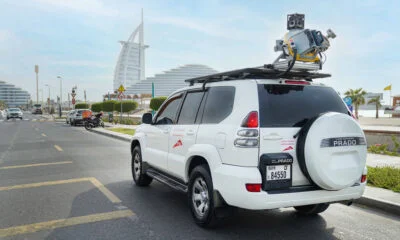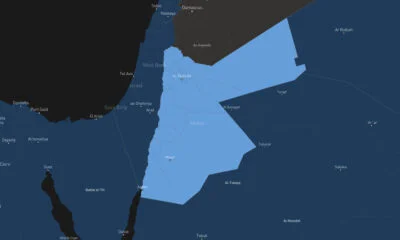News
UAE Hope Probe To Go Into Orbit Around Mars This Week
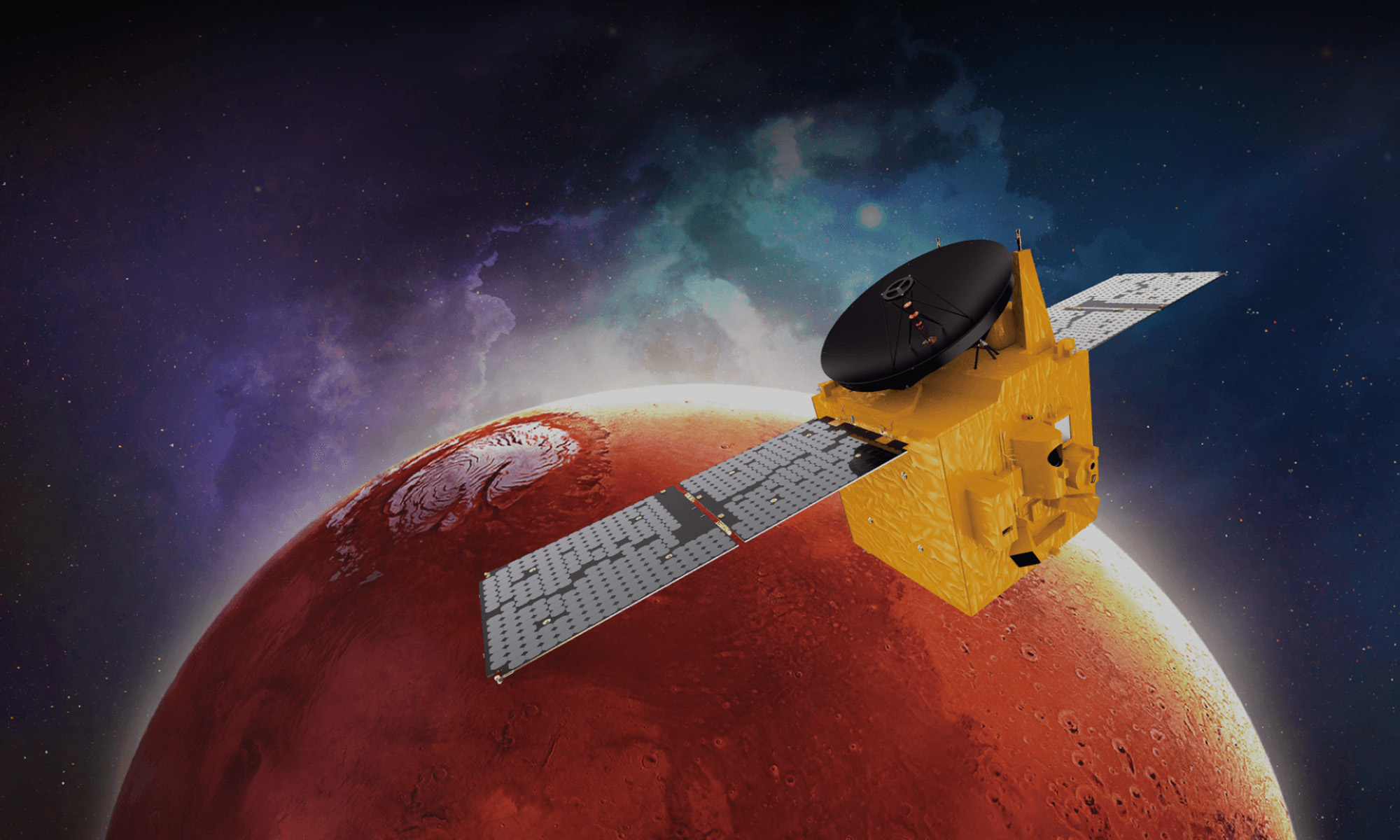
After nearly seven months in space, the Emirates Mars Mission’s Hope Probe (Arabic: مسبار الأمل, Al Amal) will make its orbital insertion on February 9, 2021. The objective of the probe is to provide the first complete portrait of the Martian atmosphere, helping scientists understand the climate dynamics of the Red Planet.
The Hope Probe was developed by the Mohammed bin Rashid Space Centre (MBRSC) and the Laboratory for Atmospheric and Space Physics (LASP) at the University of Colorado Boulder, and it will be the first of the three spacecraft that took advantage of the July 2020 Mars launch window, with the other two being Tianwen-1 (China) and Mars 2020 (USA).
Before Hope Probe can use its three scientific instruments to answer important questions about the loss of hydrogen and oxygen from Mars into space, it must first successfully perform a complex and risky maneuver to enter a Mars orbit, using all of its six thrusters to slow down from 121,000 km/h to 18,000 km/h.
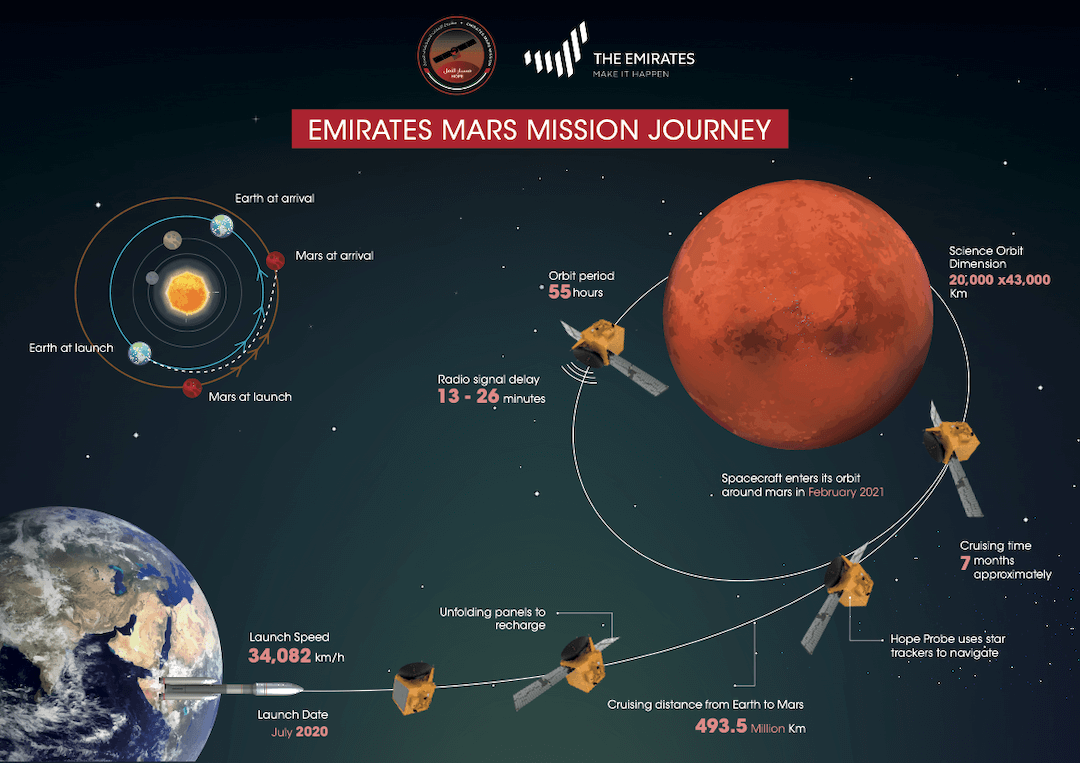
Emirates Mars Mission
If successful, the United Arab Emirates will become only the fifth nation to reach Mars. The occasion is timed to mark the 50th anniversary of the unification of the wealthy Gulf state, so the sense of anticipation is understandably sky-high — not just figuratively but also literary. Dubai’s Burj Khalifa, the world’s tallest skyscraper, currently shines red to signal the arrival of the Hope Probe to Mars.
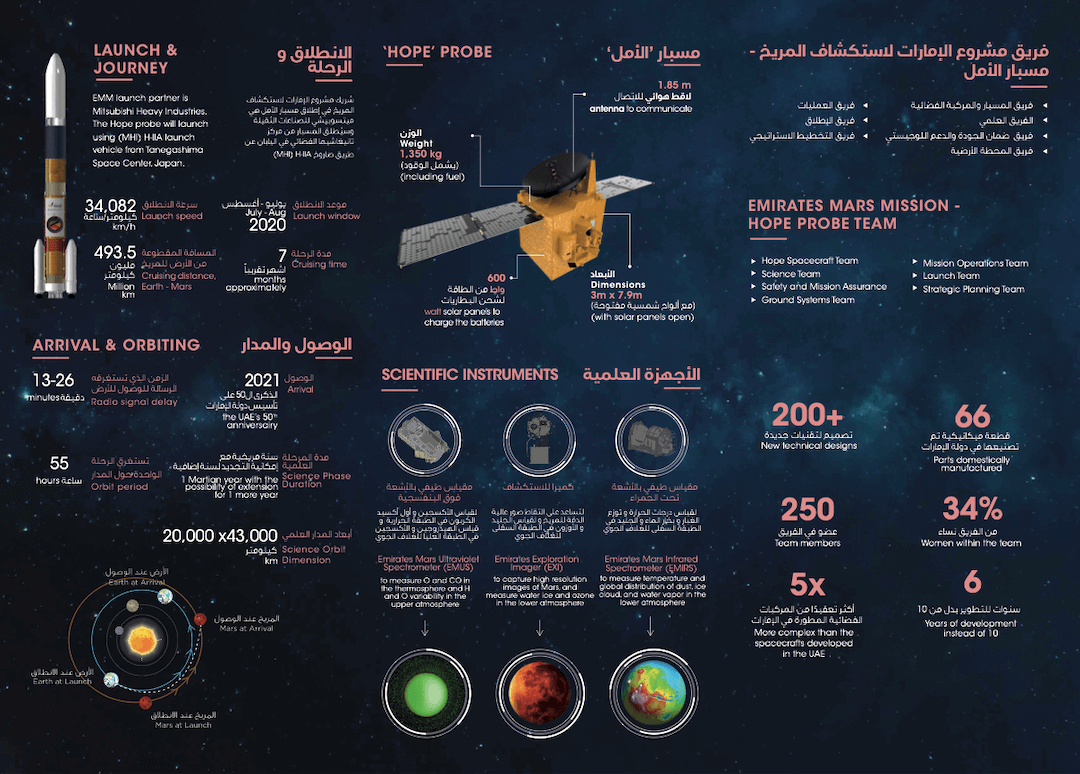
Emirates Mars Mission
Regardless of how the Emirates Mars Mission ends, it has already completed its goal of stimulating young students to pursue STEM-related fields.
“We’ve seen a large shift with the mindset of students, first and foremost, within the Emirates” said Her Excellency Sarah bint Yousef Al Amiri, chairperson at the UAE Space Agency and minister of state for advanced sciences in the UAE. “But we’ve also seen a lot of keen engagement within the region, a region that is typically known to be unstable, and that has triggered a lot of thoughts with regards to what is possible” she added.
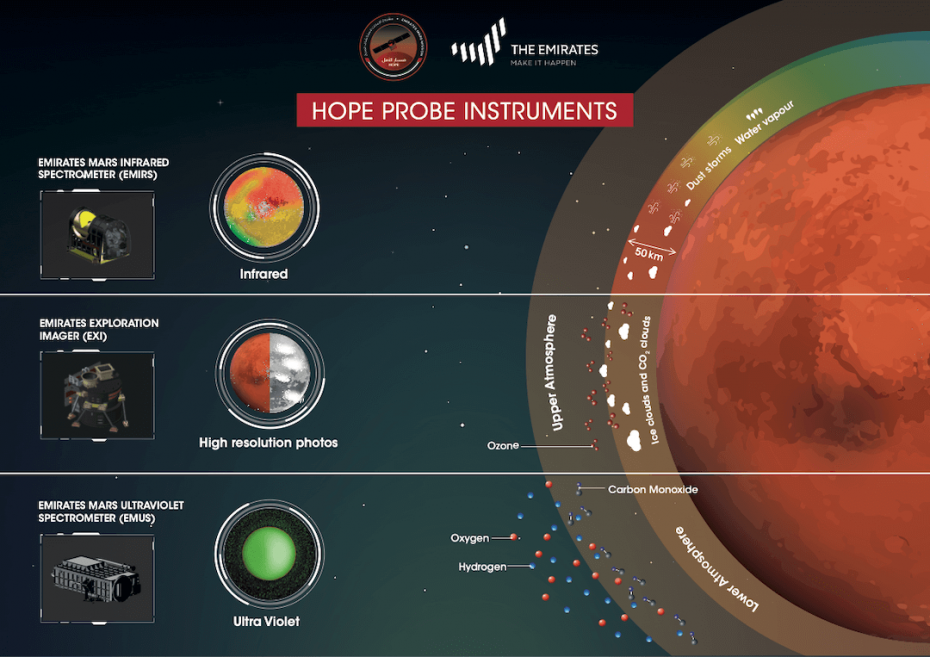
Emirates Mars Mission
Also Read: Hyperloop Video Provides A Peek At The Future Of Transportation
According to the world’s richest person, Elon Musk, it should be possible to send 1 million people to Mars by 2050, and the data collected by probes such as the Hope Probe are vital for making this lofty plan happen.
You’ll be able to watch live coverage of the UAE Hope Probe reaching Mars on the UAE Space Agency website.
News
Google Releases Veo 2 AI Video Tool To MENA Users
The state-of-the-art video generation model is now available in Gemini, offering realistic AI-generated videos with better physics, motion, and detail.

Starting today, users of Gemini Advanced in the MENA region — and globally — can tap into Veo 2, Google’s next-generation video model.
Originally unveiled in 2024, Veo 2 has now been fully integrated into Gemini, supporting multiple languages including Arabic and English. The rollout now brings Google’s most advanced video AI directly into the hands of everyday users.
Veo 2 builds on the foundations of its predecessor with a more sophisticated understanding of the physical world. It’s designed to produce high-fidelity video content with cinematic detail, realistic motion, and greater visual consistency across a wide range of subjects and styles. Whether recreating natural landscapes, human interactions, or stylized environments, the model is capable of interpreting and translating written prompts into eight-second 720p videos that feel almost handcrafted.
Users can generate content directly through the Gemini platform — either via the web or mobile apps. The experience is pretty straightforward: users enter a text-based prompt, and Veo 2 returns a video in 16:9 landscape format, delivered as an MP4 file. These aren’t just generic clips — they can reflect creative, abstract, or highly specific scenarios, making the tool especially useful for content creators, marketers, or anyone experimenting with visual storytelling.
Also Read: Getting Started With Google Gemini: A Beginner’s Guide
To ensure transparency, each video is embedded with SynthID — a digital watermark developed by Google’s DeepMind. The watermark is invisible to the human eye but persists across editing, compression, and sharing. It identifies the video as AI-generated, addressing concerns around misinformation and media authenticity.
While Veo 2 is still in its early phases of public rollout, the technology is part of a broader push by Google to democratize advanced AI tools. With text-to-image, code generation, and now video creation integrated into Gemini, Google is positioning the platform as a full-spectrum creative assistant.
Access to Veo 2 starts today and will continue expanding in the coming weeks. Interested users can try it out at gemini.google.com or through the Gemini app on Android and iOS.


